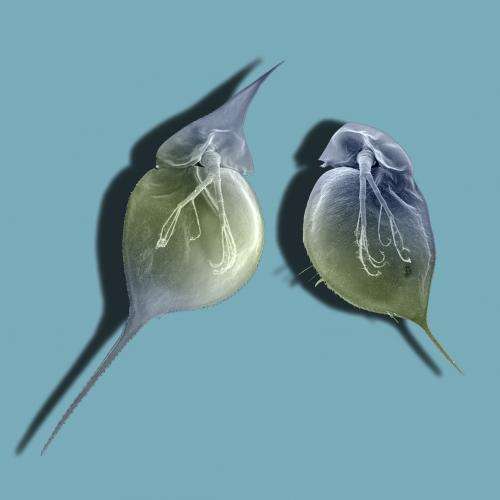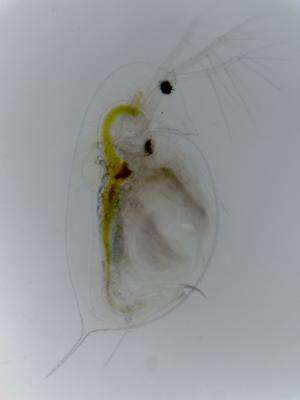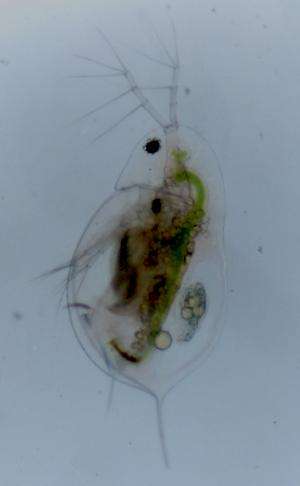Can a tropical water flea invade European lakes?

Daphnia is a genus of small, planktonic crustaceans, commonly called 'water fleas' because of their jumpy swimming style and their size (between 0.2 and 5 mm). They live in various aquatic environments, ranging from acidic swamps to freshwater lakes, ponds, streams and rivers. Species of the genus Daphnia play a key role in freshwater food webs: they consume algae and are themselves an important food item for small fish.
Daphnia lumholtzi is a small subtropical and tropical representative, known as an invader in North America. It has never been found in Europe in the wild. Laboratory experiments were conducted by scientists from Ludwig-Maximilians-Universität München; University of Bayreuth; and Technische Universität, München, to assess the possibilities of a potential invasion in Europe. The study was published in the open access journal NeoBiota.

The experiments suggest that D. lumholtzi can invade European lakes and can cause substantial declines in the populations of native water flea species, e.g. Daphnia hyalina and D. cucullata. It was also shown that absence of predatory fish may ease establishment in European lakes. Surprisingly, the invasive plankter proved to be a strong competitor even at temperatures as low as 15°C, despite its tropical origin.

"We still do not know whether D. lumholtzi will invade European lakes, but our experiments did not identify any obstacles. In contrast to some studies suggesting that it might be filling an empty niche in North America, the results of our experiments indicate that it may suppress the population growth or even outcompete some native European Daphnia" says the lead author Meike J. Wittmann.
More information: Meike J. Wittmann, Wilfried Gabriel, Eva-Maria Harz, Christian Laforsch, Jonathan M. Jeschke, Can Daphnia lumholtzi invade European lakes? NeoBiota: 16: 39, doi: 10.3897/neobiota.16.3615
Journal information: NeoBiota
Provided by Pensoft Publishers




















